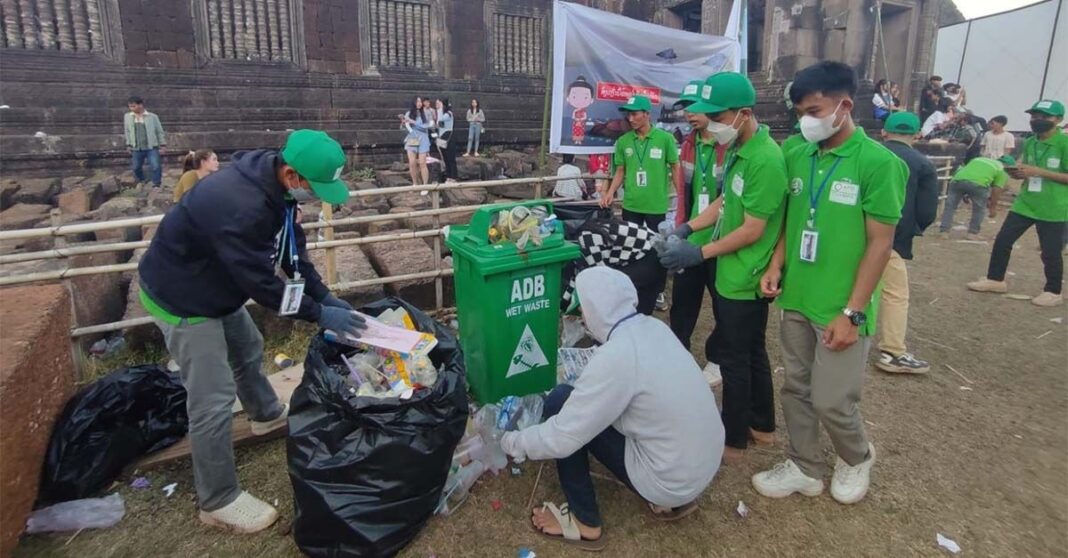A volunteer group made up of teachers, students, and CHAMPA (Cultural Heritage Management, Preservation, and Territorial Attractiveness) Project team members have spoken out about waste management at the recent Vat Phou Festival, explaining that attempts were made to cope with the rubbish that piled up during the event.
Some 24 volunteers, including teachers from Champasack Secondary School and Dontalat Secondary school, as well as members of the CHAMPA project were on site informing visitors during the Vat Phou Festival about the importance of using rubbish bins to dispose of waste properly.
Organizers say that the Vat Phou Festival, which was held from 3rd-5th February, was a huge success, seeing more than 100,000 visitors.
Posters designed with key messages were installed at strategic points of the site, as well as signs placed at waste collection points, according to Isabelle Magueur, CHAMPA Project TA team leader.
To help reduce the waste for the coming years, she suggests that the festival needs more volunteers, and most important of all is to teach kids the importance of waste management.
As for the CHAMPA Project, “the final objective is to preserve the heritage and strengthen the territorial attractiveness of Vat Phou Champasack and Savannakhet with a special focus on Champasack District and Kaysone Phomvihane City to improve the local benefits of tourism and the living conditions of residents,” said Ms. Isabelle.
The Vat Phou Festival is a three-day Buddhist festival, held on the third lunar month of each year (according to the Buddhist Lunar calendar). Buddha is said to have delivered certain teachings during this time which could be the reason why it is celebrated each year.
Vat Phou Temple complex is a remarkably well-preserved planned landscape, more than 1,000 years old. The structure which is a UNESCO World Heritage Site is believed to have been built in the 10th century, while it is estimated that Buddhism first came to Laos around the 7th-8th century.



